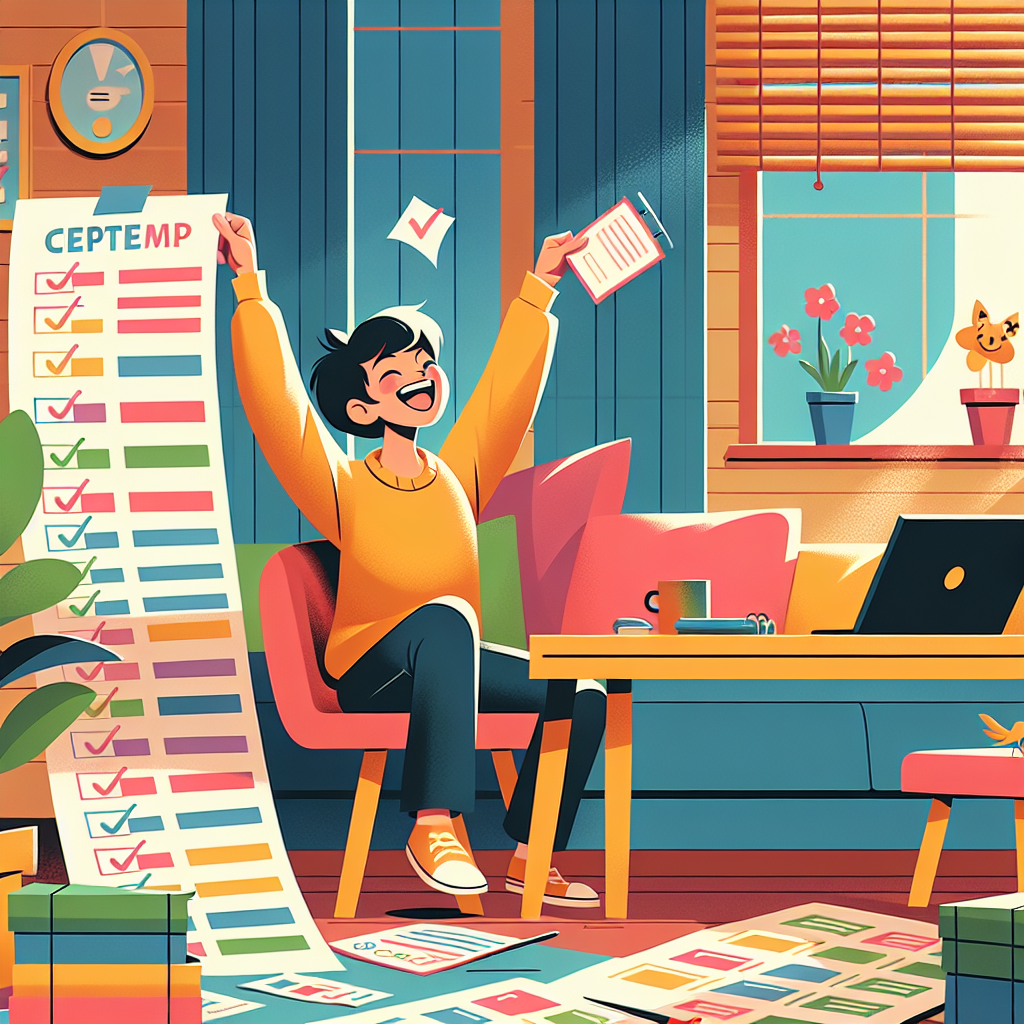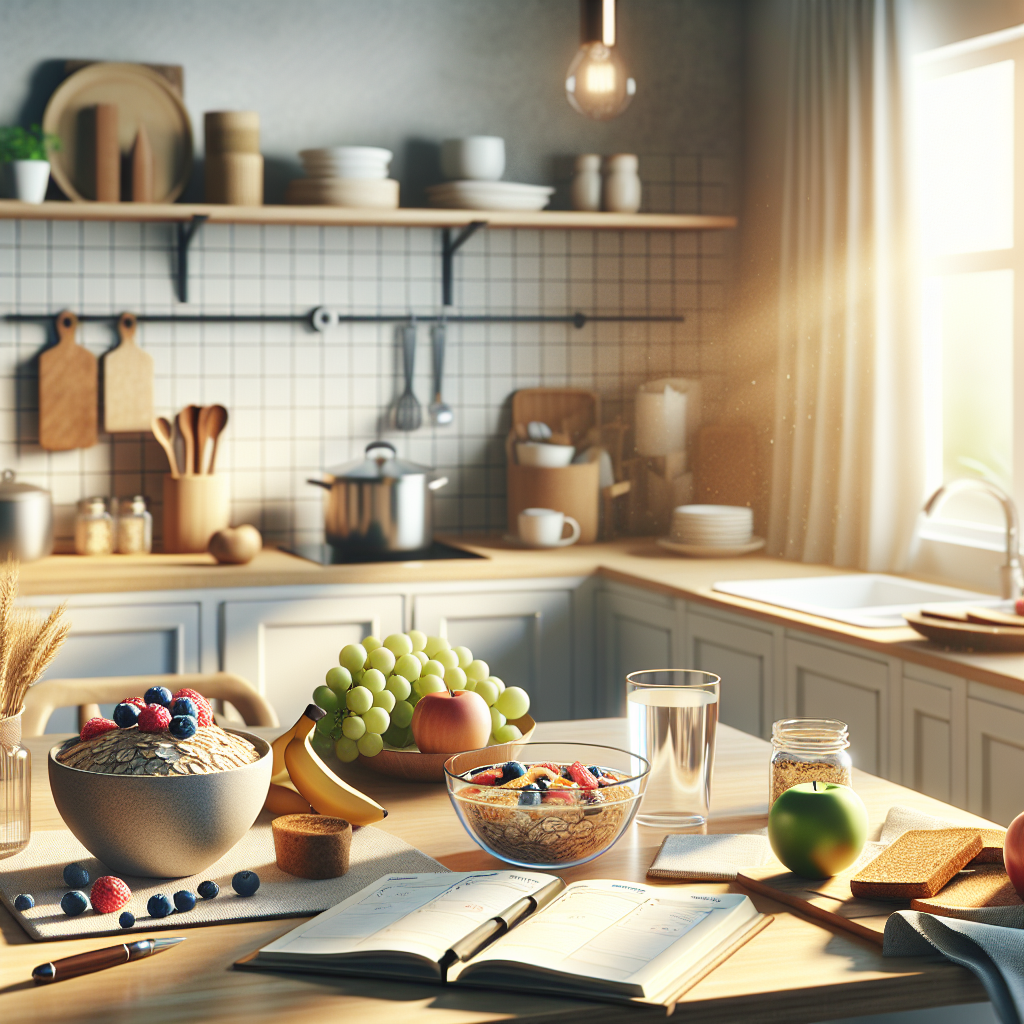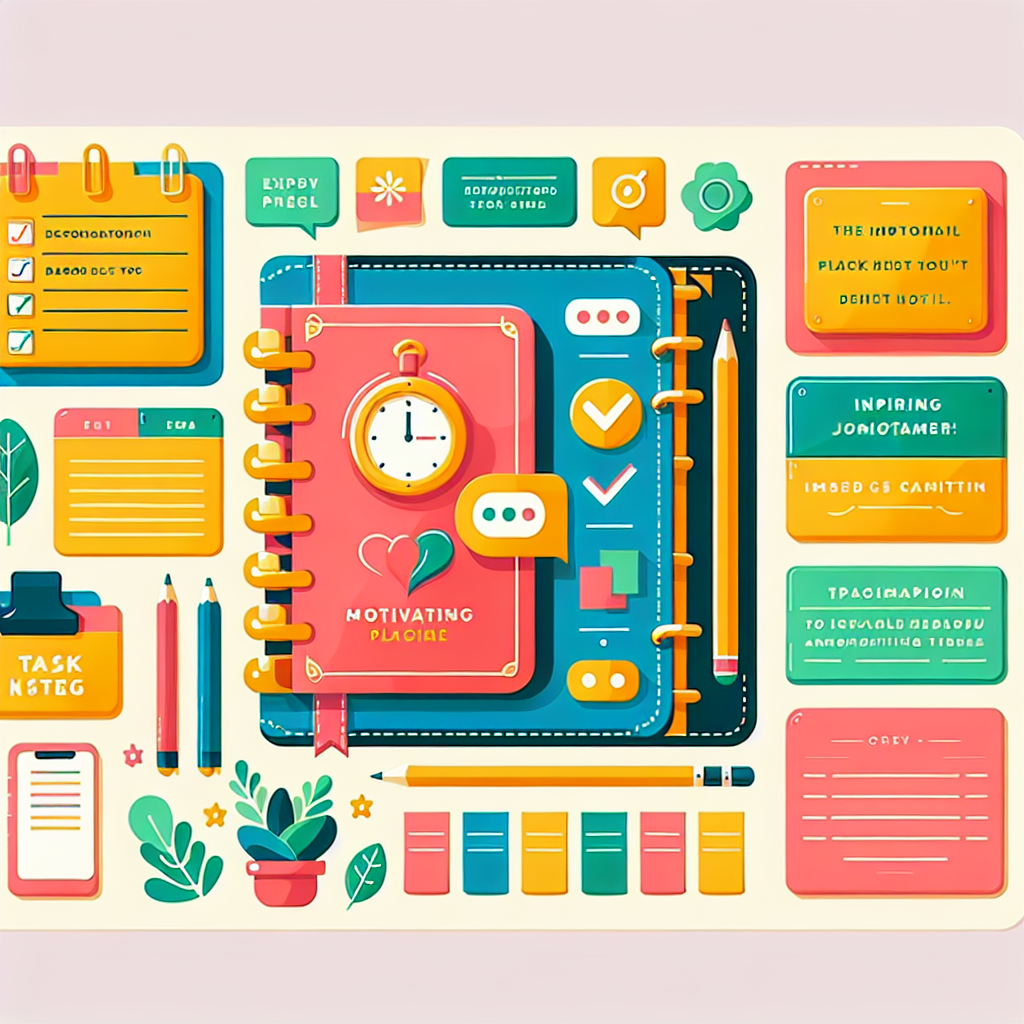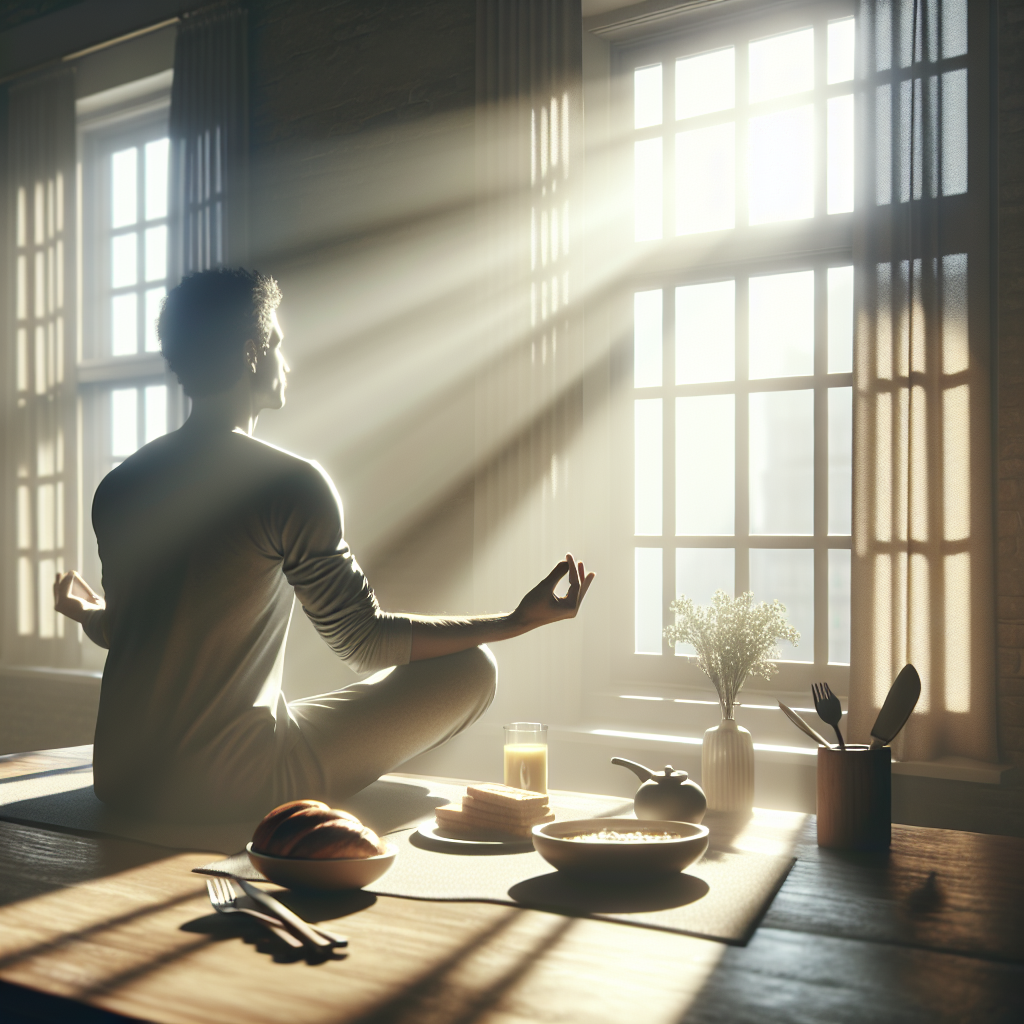Master Your Day: Creating Sustainable ADHD-Friendly Daily Routines
Introduction
Welcome to the vibrant world of ADHD daily routines, where chaos meets creativity! If you’re someone who navigates life with ADHD, you know that establishing a daily routine can sometimes feel like herding cats exciting but utterly unpredictable. But fear not! With a sprinkle of structure and a dash of fun, we can turn your daily grind into a smooth ride.
Imagine waking up each morning with an ADHD morning routine that energizes you rather than drains you. Picture yourself breezing through your tasks, thanks to clever ADHD time management strategies that keep distractions at bay. And as the sun sets, envision winding down with an ADHD evening routine that prepares you for restful sleep instead of racing thoughts.
This guide is all about creating sustainable routines tailored for individuals with ADHD because let’s face it, life is too short for boring schedules! We’ll explore everything from effective time management techniques to organizing tips that transform your chaotic checklist into an achievable plan. Whether you’re a busy adult juggling work and home life or a parent managing the whirlwind of family activities, these insights are designed to help you thrive.
Routines can significantly enhance your productivity and reduce stress levels. By embracing structured routines for ADHD, you’re not just surviving; you’re thriving!
So grab your favorite beverage (coffee or tea, we don’t judge), and let’s dive into the world of ADHD-friendly daily habits that will help you master your day like a pro!

Understanding ADHD and Daily Routines
So, what exactly is ADHD? Attention Deficit Hyperactivity Disorder (ADHD) is a neurodevelopmental disorder that affects both children and adults. It can lead to challenges with focus, impulse control, and organization. But here’s the kicker: while ADHD can feel like a chaotic whirlwind, establishing structured routines can transform that chaos into something manageable.
For adults with ADHD, daily routines are not just helpful; they are essential. Think of routines as the GPS for your day without them, you might end up lost in a sea of distractions. Here’s why they matter:
- Improved Productivity: A well-structured routine allows you to allocate your time wisely and helps in prioritizing tasks. When you know what’s coming next, it’s easier to stay focused.
- Reduced Stress: Routines create predictability in your life. Less uncertainty means less anxiety like having a safety net when walking a tightrope.
- Better Time Management: With an ADHD daily routine, you can carve out specific times for work, self-care, and leisure balancing your day like a pro juggler.
Key Takeaway: Establishing consistent routines is crucial for managing ADHD effectively. They help streamline daily activities and create a sense of order that can greatly enhance productivity.
If you’re wondering how to start creating an ADHD-friendly daily routine, think about breaking it down into manageable parts: morning rituals to kickstart your day and evening rituals to wind down effectively. Each piece plays a vital role in the grand puzzle of daily organization!
ADHD Morning Routine
Ah, mornings! The time when your bed feels like a warm hug and your alarm clock sounds like a cruel joke. For those navigating ADHD daily routines, establishing an effective ADHD morning routine can be the secret sauce to kick-starting a productive day. Let’s break it down!
Key Components of an Effective Morning Routine
- Wake-Up Time: Consistency is key! Try to wake up at the same time every day to regulate your internal clock.
- Hydration: Start with a glass of water. It’s like giving your brain a refreshing splash of motivation.
- Movement: A quick stretch or a short walk can help shake off the sleepiness and get those endorphins flowing.
- Nutrition: Breakfast is not just for kids! Fuel up with something nutritious to keep your energy levels steady.
Strategies for Creating a Personalized Morning Ritual
Your morning routine should feel less like a chore and more like your own personal magic spell. Here are some strategies:
- Create Visual Cues: Use sticky notes or digital reminders that can guide you through each step of your morning.
- Set Up Your Space: Organize your morning essentials (like clothes, breakfast items, etc.) the night before to eliminate decision fatigue.
- Add Enjoyable Activities: Incorporate something you love like listening to music or reading for motivation as you start your day.
Tips for Maintaining Consistency in the Morning
The struggle is real when it comes to consistency, especially with ADHD. Here are some tips that might help:
- Simplify Your Routine: Keep it short and sweet. Aim for three to five essential tasks each morning less is more!
- Track Your Progress: Use an ADHD routine checklist to mark off completed tasks. It’s satisfying and helps build momentum!
- Create Accountability: Partner with someone who can check in on your progress, whether it’s a friend or an app designed for ADHD management.

ADHD Evening Routine
As the sun sets, it’s time to shift gears and transition from the hustle and bustle of the day to a more tranquil evening. For those navigating ADHD daily routines, this transition is crucial for winding down effectively and setting the stage for a restful night. Think of your evening routine as the closing credits of a movie it wraps up all the action and prepares you for the next episode of your life!
The Significance of Winding Down Effectively
Winding down isn’t just about turning off the lights; it’s about giving your brain a chance to decompress. Studies show that individuals with ADHD often struggle with sleep due to racing thoughts and an inability to relax. A structured evening routine can help mitigate this by signaling to your brain that it’s time to chill out.
Creating a Calming Evening Ritual for Better Sleep Hygiene
Your evening ritual should be like a warm cup of chamomile tea soothing and comforting. Here are some tips to craft that perfect calming routine:
- Set a consistent bedtime: Aim for the same sleep schedule every night, even on weekends. Consistency is key!
- Limit screen time: Try to unplug from devices at least an hour before bed. Blue light can mess with your melatonin production, making it harder to fall asleep.
- Create a cozy environment: Dim the lights, play some soft music, or light a scented candle (safely, of course!). Your space should feel like a sanctuary.
- Incorporate relaxation techniques: Consider meditation, deep breathing exercises, or gentle stretches as part of your wind-down routine.
How to Prepare for the Next Day in Your Evening Routine
A well-prepared morning starts with an organized evening! Here’s how you can set yourself up for success:
- Create an ADHD task list: Jot down what you need to accomplish tomorrow. This helps clear your mind before bed.
- Laying out clothes: Pick out your outfit for the next day. It saves time and decision-making energy in the morning!
- Packing lunch or prepping breakfast: Get ahead on meals so you can enjoy that extra snooze in the morning.
- Review your schedule: Take a quick glance at tomorrow’s agenda this helps reduce anxiety about what’s coming next.
Your ADHD evening routine should be as unique as you are! By establishing these structured routines for ADHD, you’re not just managing symptoms; you’re paving the way for more productive days ahead. So grab that cozy blanket, tuck those worries away, and embrace your nightly ritual like it’s a well-deserved hug after a long day!
Time Management Strategies for ADHD
Managing time effectively can feel like trying to catch smoke with your bare hands when you have ADHD. But fear not! With the right strategies, you can transform your chaotic schedule into a well-oiled machine. Think of it as crafting your own superhero toolkit for ADHD daily routines.
Daily Planning and Scheduling
First things first: let’s talk about planning. Daily planning for ADHD isn’t just about filling in a calendar; it’s about creating a roadmap that guides you through the day without losing your way. Here are some tips to get you started:
- Chunk It Down: Break tasks into bite-sized pieces. Instead of “clean the house,” try “clean the kitchen” or “organize the living room.” This makes it less overwhelming.
- Prioritize Like a Pro: Use the Eisenhower Matrix! Label tasks as urgent, important, both, or neither. Focus on what truly matters.
- Set Time Limits: Use timers to create urgency. Set a timer for 25 minutes of focused work followed by a 5-minute break (hello, Pomodoro Technique!).
Utilizing Tools and Apps
Your smartphone is more than just a device for scrolling through memes; it’s also a powerful ally in managing ADHD time management. Here are some apps that can help:
- Trello or Asana: Great for visual task management and keeping track of projects.
- Todoist: An intuitive task list app that helps you stay organized with deadlines and priorities.
- Google Calendar: Set reminders and alerts to keep appointments and deadlines front and center.
The Role of Reminders and Alarms
If you’ve ever lost track of time while binge-watching your favorite show, this one’s for you! Setting reminders can be your saving grace in the world of ADHD daily routines:
- Create Alarms: Use alarms not just for waking up but also for transitioning between tasks or activities.
- Add Visual Cues: Sticky notes on your fridge or computer can serve as gentle nudges towards tasks that need attention.
- Simplify Notifications: Keep notifications minimal but effective only allow alerts from essential apps to avoid distraction overload.
Remember: The goal is to create structured routines for ADHD that work with your brain’s unique wiring, not against it!

The key takeaway? Effective time management strategies can transform how you approach your day-to-day life with ADHD. By integrating these techniques into your daily organization tips for ADHD, you’ll pave the way for more productive days ahead!
Organizing Tips for ADHD-Friendly Routines
When it comes to ADHD daily routines, organization is your trusty sidekick. Think of it as the Robin to your Batman essential for fighting chaos and making your day a little more manageable. Here are some organizing tips that can help you create a routine that works for you.
Simplifying Daily Tasks and Responsibilities
First things first, let’s declutter that mental space! Simplifying your daily tasks doesn’t mean you have to toss everything out like a spring cleaning frenzy. Instead, try:
- Prioritizing tasks: Use the Eisenhower Matrix to distinguish between what’s urgent and important.
- Breaking tasks down: Instead of “clean the house,” think “vacuum living room” or “wash dishes.” Smaller tasks are less daunting!
- Limiting choices: Too many options can lead to decision fatigue. Stick to two or three tasks per time block.
Creating an Effective ADHD Task List and Schedule Ideas
Your task list should be more than just a jumble of chores; it should be a roadmap for your day! Try these strategies:
- Use digital tools: Apps like Todoist or Trello can help keep everything organized in one place.
- Color-code tasks: Assign colors based on urgency or type (e.g., work, personal, errands). It’s like a visual party for your brain!
- Create themed days: Designate specific days for certain types of tasks (e.g., “Monday is for meetings,” “Wednesday is for errands”). This helps in managing ADHD with routines.
The Benefits of Visual Aids and Checklists for Organization
If you’re not using visual aids yet, it’s time to hop on that bandwagon! Here’s why they’re game-changers:
- Visual reminders: Sticky notes or whiteboards can serve as constant nudges throughout your day.
- The power of checklists: There’s something oh-so-satisfying about checking off completed tasks. It boosts motivation and gives you that sweet dopamine hit!
- Create an ADHD routine checklist: Having a dedicated checklist can help streamline both morning and evening rituals, ensuring nothing gets overlooked.
The goal here is not just to organize but to create an environment where you thrive. With these organizing tips tailored for ADHD-friendly routines, you’re well on your way to mastering your day!
Merging Mindfulness with Daily Routines for ADHD Management
Mindfulness and ADHD might seem like an odd couple, kind of like peanut butter and pickles. But when blended just right, they can create a delightful concoction that enhances your ADHD daily routines. The key here is to embrace the power of being present, which can make even the most chaotic days feel a bit more manageable.
The Importance of Mindfulness in Daily Routines
For those navigating the twists and turns of ADHD, mindfulness serves as a mental anchor. It helps you stay grounded amidst distractions, allowing for better focus and clarity. Think of it as your trusty GPS guiding you through the winding roads of daily life.
Incorporating Mindfulness Practices into Morning and Evening Rituals
Let’s sprinkle some mindfulness magic into your routines:
- Morning Breathing: Start your day with just five minutes of deep breathing. It’s like giving your brain a gentle wake-up call before diving into the chaos.
- Mindful Breakfast: Instead of scrolling through your phone while munching on toast, try to savor each bite. Notice the flavors and textures; it sets a positive tone for the day!
- Evening Reflection: At night, take a moment to reflect on what went well during your day. This practice not only boosts mood but also helps you identify what strategies worked best in your ADHD evening routine.
- Bedtime Calm: Wind down with a calming ritual maybe some light stretching or listening to soft music. Think of it as preparing yourself for a cozy hibernation!
Tips on Balancing Work and Home Life Through Mindfulness
The struggle between work commitments and home responsibilities can feel like juggling flaming torches while riding a unicycle tricky at best! Here are some tips to find balance:
- Create Boundaries: Set specific times for work and personal life. When work hours are over, mentally shift gears like switching from superhero mode to chill mode.
- Simplify Tasks: Break down tasks into smaller chunks using an effective ADHD task list. This way, you can focus on one thing at a time without feeling overwhelmed.
- Praise Progress: Celebrate small wins! Did you stick to your schedule today? High five! Recognizing achievements can boost motivation and reinforce positive behavior.

Establishing Consistency in Routines with ADHD
When it comes to ADHD daily routines, consistency is your best friend. Think of it like training a puppy: the more you repeat commands, the better they learn. Establishing a routine is no different. Here’s how to make sure your routines stick like peanut butter on bread.
The Role of Repetition in Forming Habits
Repetition is the secret sauce for creating lasting habits. The brain loves patterns, and by engaging in the same activities at the same times, you signal your brain to recognize these behaviors as normal. This can make tasks feel less daunting and more automatic over time.
Tactics to Stay Consistent with Routines Over Time
- Start Small: Begin with a few simple tasks within your routine. For instance, if you’re working on an ADHD morning routine, start by committing to just one task, like making your bed every morning.
- Use Visual Reminders: Stick post-it notes around your home or use an app to remind you of your daily tasks. Visual cues can be incredibly helpful for keeping ADHD brains on track.
- Set Timers: Use timers for tasks that might drag on or become overwhelming. For example, set a timer for 10 minutes to tidy up your workspace this creates urgency and focus.
- Create Accountability: Share your goals with friends or family who can check in on your progress. Having someone else involved can boost motivation and keep you accountable.
Acknowledging Progress and Adjusting as Needed
It’s crucial to celebrate small wins! Did you stick to your evening routine three nights in a row? High five! Recognizing progress helps reinforce the behavior and keeps you motivated. Plus, be flexible; if something isn’t working, don’t hesitate to tweak it. Routines should evolve just like we do!
Key Takeaway: Establishing consistency in routines with ADHD isn’t just about repetition; it’s about creating a supportive environment that encourages growth and adaptability!


